Pipeline, goldrush and hummingbird
A new play tells stories of environmental destruction in 2021 and the 1860s, with time periods woven together by the small yet mighty hummingbird—symbol of wisdom and courage.
October 08th, 2025
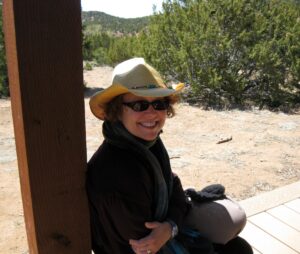
Elaine Ávila is a playwright and educator whose work bridges art, activism and climate awareness.
“But I was not prepared for what I saw. There were chain-link fences and signs that read: Any person who obstructs access to this site is in breach of an injunction order and may be subject to immediate arrest and prosecution.”
Review by Caroline Woodward
As soon as I saw the title of this play, Hummingbird (Talonbooks $18.95), I thought of Flight of the Hummingbird, the Haida fable recreated in a beautiful little book published by Greystone Books in 2008, retold and illustrated by the Indigenous artist, Michael Nicoll Yahgulanaas. The spirit of the hummingbird, beloved in so many cultures and also a talisman for environmentalists, lives on to inspire us again in this skillfully layered script by Vancouver-based playwright Elaine Ávila.
Written for eight cast members, this drama is ideal for Grades 10-12 and in fact, it has been performed by a number of Lower Mainland high school theatre classes already. Tackling what could seem like an overwhelming subject for that age group, namely activism around large-scale invasive industrial activity and climate change, Ávila deftly balances the dark and the light, conflict and humour, small yet mighty actions to counteract the soul-crushing belief in “our inevitable destruction,” as dispirited teenagers in pre-production workshops put it.
In less-skilled hands, this could be a dogmatic and downright depressing effort but the playwright who has given us award-winning dramas like Fado, The Ballad of Ginger Goodwin and Kitimat, has created another lively, sophisticated and textured work of art which can be staged in many and varied ways. Productions so far have involved video-game voiceovers, flying puppets aided by bamboo rods and fishing lines, screen projections for rapid-fire series of text messages, drones and, of course, eight live actors amidst a mash-up of visuals, music and voice.
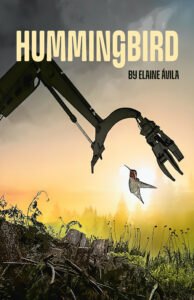
The play is set in 2021, in the midst of the Covid pandemic then well-underway as was the Trans-Mountain Pipeline construction through Burnaby. In an inspired leap of imagination, there is a parallel cast of characters coping with the Fraser River gold rush era of the 1860’s. What connects these seemingly disparate periods of societal upheaval and conflict in BC’s history is the hummingbird.
Did you know that there are no hummingbirds in Africa, Europe or Asia? Or that Europeans used to wear hundreds of dead, skinned hummingbirds on their hats and capes? These and a great many other fascinating facts are in store for theatre-goers such as the legally-bound fact that bulldozers cannot, on public lands in British Columbia, knock down trees with migrating bird nests in them. Thus a tiny hummingbird’s nest temporarily halted construction of the TMX pipeline at a whopping cost. I compared this latter-day sensitivity to the building of the first dam on the Peace River right when moose and deer were calving and birds were nesting. So many wild creatures were drowned in this mindless destruction in the early to mid-60’s in the North Peace region, not to mention the flooding of an entire indigenous village. This play examines deforestation and major trenching through a city and a forest in unceded indigenous territory with many well-informed human witnesses.
I am very impressed by the amount of research, with the Community Nest Finding Network in particular, and the workshopping with students in Burnaby Mountain Secondary School and theatre professionals involved in getting this play up on its feet, quite literally. Originally commissioned by the Robert M. Ledingham School of Theatre, Music & Film in Vancouver, the script was developed at the Banff Playwrights Lab and then at the Caravan Farm Theatre National Playwrights Retreat. The original impetus for the play came from Ávila’s long-time collaborator, Paul Moniz de Sá, a sound designer, educator, director, and actor who asked her to write about what was going to happen to the land on Burnaby Mountain, near his home. The inaugural script was funded by the Arts Umbrella Fund Development Team and later performed by the Arts Umbrella Senior Theatre Troupe as part of their Eco Theatre Project in Vancouver. Part of the acceptance of this inaugural commission was for Ávila to teach theatre workshops to students, and, with their teachers, to explore climate change.
There is an informative foreword by two birders from the Community Nest Finding Network, Donna Clark and Sara Ross, an introduction by the playwright, a production history, and an illuminating afterword by Chantal Bilodeau, a Montreal-born, New York-based playwright and translator, and the Artistic Director of the Arts & Climate Initiative. All these ‘extras’ are very useful for drama teachers who may face students distressed about the constant smoke of wildfires, heat domes, atmospheric rivers and the loss of entire species happening in their young lifetimes.
Elaine Ávila has given us a play with great resonance for all ages, especially for the age group which most needs to feel hope and to know they have agency, the power to create positive change in their world. 9781772016529
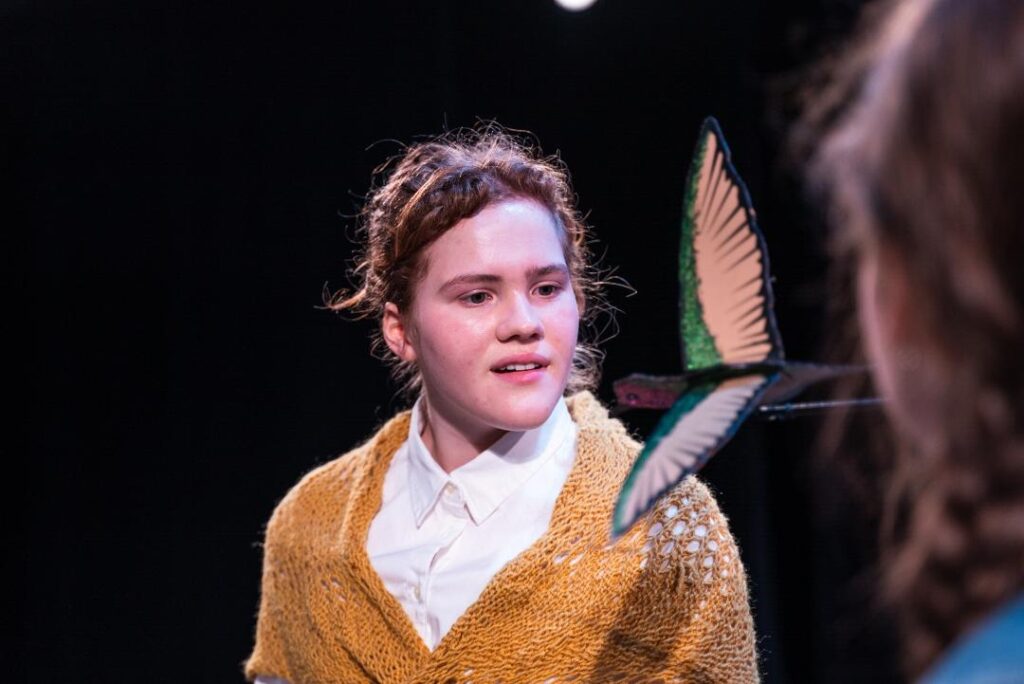
Hummingbird production still
Caroline Woodward is a New Denver-based writer and reviewer.
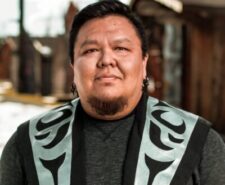
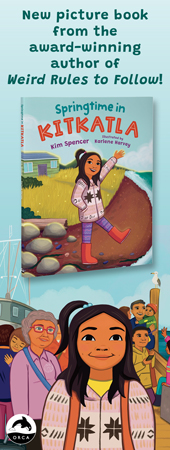
Leave a Reply